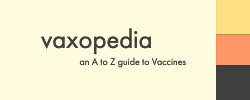Do you know how vaccines are made?

When we say that chickens are used to make flu vaccine, do you think that means that live chickens are actually infected with the flu to make the vaccine?
They aren’t.
Just like live monkeys aren’t injected with the polio virus to make the polio vaccine.
Those are just myths you see in vaccine scare videos on anti-vaccine websites.
How Are Vaccines Really Made?
So how are vaccines really made?
It depends, after all, there are a lot of different types of vaccines.
But instead of monkey cages and chicken coops in the labs of today’s vaccine manufacturers, you will find clean rooms with large scale, stainless steel bioreactors, master cell banks, seed fermenters, microcarriers, centrifuges, filtration and chromatography equipment, and filling and lyophilization equipment.

That doesn’t sound so scary or shocking, does it?
What’s shocking about the whole process of making a vaccine?
It takes a long time. Often one to three years! And that’s after all of the time that went into the research, testing, and licensing of the vaccine.
“Viruses are grown in cells, which can be either primary cells, such as chicken fbroblasts (e.g., yellow fever vaccine), or continuous cell lines, such as MRC-5 (e.g., hepatitis A vaccine). Bacterial pathogens are grown in bioreactors using medium developed to optimize the yield of the antigen while maintaining its integrity. Recombinant proteins can be manufactured in bacteria, yeast, or cell culture. ”
Plotkin’s Vaccines (Seventh Edition)
The only other shocking thing about making vaccines is how boring it all is, at least if you aren’t into biology, with most vaccines using the same basic steps:
- decide on the type of antigen – vaccines can be made of attenuated live viruses, inactivated viruses or bacteria, or just part of the virus or bacteria (subunit and conjugate vaccines)
- generate an antigen – this is the thing in the vaccine that will stimulate an immune response and protect your child. It used to be what anti-vaccine folks were concerned about until we explained that kids today are exposed to far fewer antigens, even though they get more vaccines and more protection.
- release and isolate the antigen – the antigen was either growing in cells or other medium and in this step, as much of the antigen is collected as possible.
- purify the antigen – multiple steps are involved in removing many of the vaccine ingredients or excipients that were used up to this step by precipitation, ultrafiltration, and column chromatography, etc. That’s why many are said to remain only in residual amounts, like formaldehyde.
- strengthen the antigen – in this step, an adjuvant might be added.
- combine all of the ingredients – stabilizers and preservatives might also be added in this step.
- last steps – finished vaccine is put in vials and syringes and then packaged
- lot release and distribution – each lot is tested before it is released to make sure it meets FDA standards for potency, safety, and sterility.
None of that sounds as scary as injecting monkeys with smallpox, watching them die, and then harvesting their infected kidney cells though, does it? If you have watched any of the anti-vaccine scare videos, hopefully the first thing that came to mind is that the smallpox vaccine isn’t actually made with the smallpox virus! It is, of course, made with vaccinia virus and wouldn’t cause anyone, whether a monkey, cow, or person to actually get smallpox. And if you haven’t figured it out by now, monkeys aren’t used to make smallpox vaccines.
“Both vaccines are derived from the New York City Board of Health strain of vaccinia, but Dryvax was grown on the skin of calves and then essentially freeze-dried for storage. It was licensed by FDA in 1931 but is no longer manufactured. ACAM2000, a “second generation” smallpox vaccine, is derived from a clone of Dryvax, purified, and produced using modern cell culture technology.”
FDA on ACAM2000 (Smallpox Vaccine) Questions and Answers
In fact, most of today’s vaccines are made in bioreactors, not in cows or monkeys.
Flu vaccine is mostly still made using chicken eggs, specifically 11-day-old embryonated chicken eggs. The flu viruses are passed into the eggs, incubated for a time to allow them to grow, and then harvested, inactivated, and purified.
How purified do they get? So purified that even people with egg allergies can get a flu vaccine these days.
Vaccines are safe. Vaccines are made safely.
What to Know About How Vaccines Are Really Made
Vaccines are made using a very safe and scientific process that is heavily regulated that will neither scare nor shock you.
More on How Vaccines Are Really Made
- CDC – Flu Vaccine and People with Egg Allergies
- Making Vaccines: How Are Vaccines Made?
- CDC – How Influenza (Flu) Vaccines Are Made
- FDA – Background on Viral Vaccine Development
- FDA – ACAM2000 (Smallpox Vaccine) Questions and Answers
- FDA – Lot Release
- How Vaccines Are Made
- Making Vaccines
- How Vaccines Are Made And Tested
- How Vaccines are Made
- How Are Vaccines Made and Why Do They Work?
- How Are Vaccines Made?
- Making Vaccines
- Study – The complexity and cost of vaccine manufacturing – An overview
- Study – Vaccine production, distribution, access and uptake
- Study – Bioreactors for high cell density and continuous multi-stage cultivations: options for process intensification in cell culture-based viral vaccine production.
- Study – Influenza Vaccine Manufacturing: Effect of Inactivation, Splitting and Site of Manufacturing. Comparison of Influenza Vaccine Production Processes
- Expansion of Vero Cells on Corning Enhanced Attachment Microcarriers and Demonstration of Scalability in a Benchtop Bioreactor
- The Vaccine Manufacturing Process (video)
- Making Vaccines – Part 2 : Vaccine Production (video)
Last Updated on April 6, 2024
